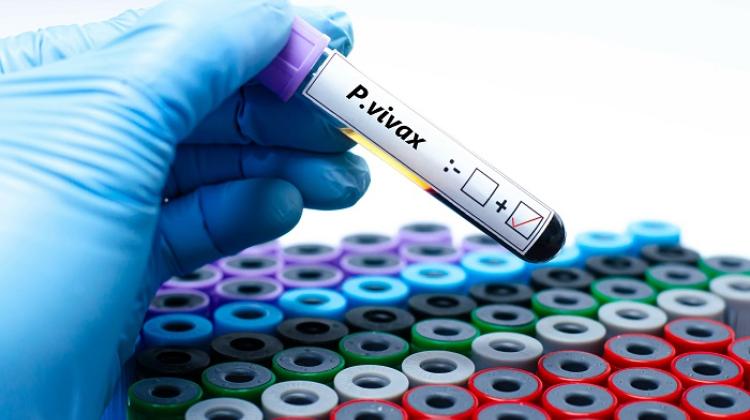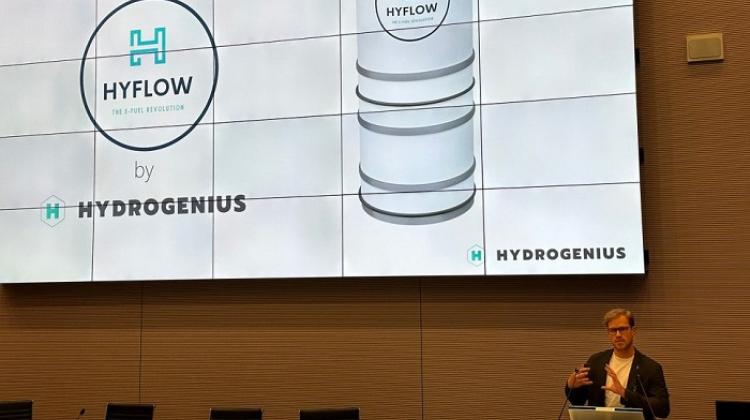Development of a tiny laser projector for mobile phones
The world\'s first laser projector that can fit inside a smartphone, is being developed at Warsaw University of Technology. The device will consume much less energy than the existing projectors, and in addition it can even be used ... to display holograms.
Energy-saving new generation laser projector, which can be easily integrated in a smartphone, is being developed by researchers at Warsaw University of Technology. The projector can be used, for example, for business purposes - to show business presentation in a bright room without worrying that the phone battery will die. It will be the world\'s first laser projector that allows to perform this type of calculation in real time. The device uses holographic technology, so it could even be used to display holograms.
Smartphones with built-in projectors are already available, but they are very energy consuming devices - if they are used to display a presentation, the battery dies very quickly - after 80 minutes. And that means that the user has to have a charger on hand. "Meanwhile, in our projector, battery would be enough for about five hours of projection. It\'s long enough" - explained in an interview with PAP Dr. Michał Makowski from the Faculty of Physics, Warsaw University of Technology. He emphasised that Polish technology would allow users to leave chargers at home, even they were planning to make a presentation.
According to the physicist, currently used lamp projectors are extremely inefficient devices that have efficiency of about 3 percent. This means that only approx. 3 percent energy consumed by the device reaches the screen, and even 97 percent energy is lost earlier. A lot of energy is lost when the dark colours are displayed. Light in black areas is not dimmed or turned off, it is absorbed in the projector. Laser projector works differently - black there is simply a lack of light, which means energy savings instead of losses. Therefore the efficiency of laser projector from Warsaw University of Technology is expected to reach 40 percent, which would mean that only 60 percent energy would be lost. Makowski estimates so that the device would consume about 10 times less energy than lamp projector.
Other advantages of the device would be its size and simplicity of construction - laser projector would consist of very few parts, including the three laser diodes and one modulator. According to Dr. Makowski the projector will not need any lenses, and lenses are exactly the components that limited the miniaturization of projectors. Moreover, conventional projectors use hundreds of components. The projector from Warsaw University of Technology will be much simpler. The light from three laser diodes will be emitted on to the spatial light modulator panel. There the light properties will be altered (the phase status of the individual pixels) and the image will be sent to the screen.
The modulator will use unique algorithm used in computer holography. "Holography is associated with 3D objects suspended in space. We use the potential of holography to display high quality flat image" - noted the physicist. He assured, however, that there would be no obstacles to display 3D image of the projector - projector could be directed at a transparent container filled with smoke.
Another of the ideas for the use of a laser projector would be to use it in large format projections - e.g. in movie theatres, where it could bring considerable savings in energy bills. In addition, the physicist argued that the invention also allows to create holographic head-up image that is displayed, for example, on glass, which could be useful in the development of new generation holographic glasses for augmented reality.
For now, the researchers showed that by using their laser projector they are able to achieve a flat monochrome projection with a single green LED. Next year they want to demonstrate a prototype of a device containing three laser diodes, which will display the image in full colour. Researchers want to create an image with a diagonal of 30 cm from a distance of about 1.5 m, which can be displayed, for example, on the wall in a bright room. The project is implemented under the project LIDER of the National Centre for Research and Development. Work is already half way through.
PAP - Science and Scholarship in Poland, Ludwika Tomala
lt/ mrt/
tr. RL
Przed dodaniem komentarza prosimy o zapoznanie z Regulaminem forum serwisu Nauka w Polsce.

















